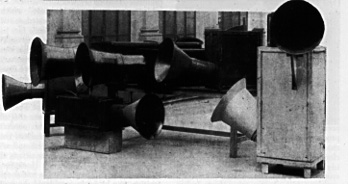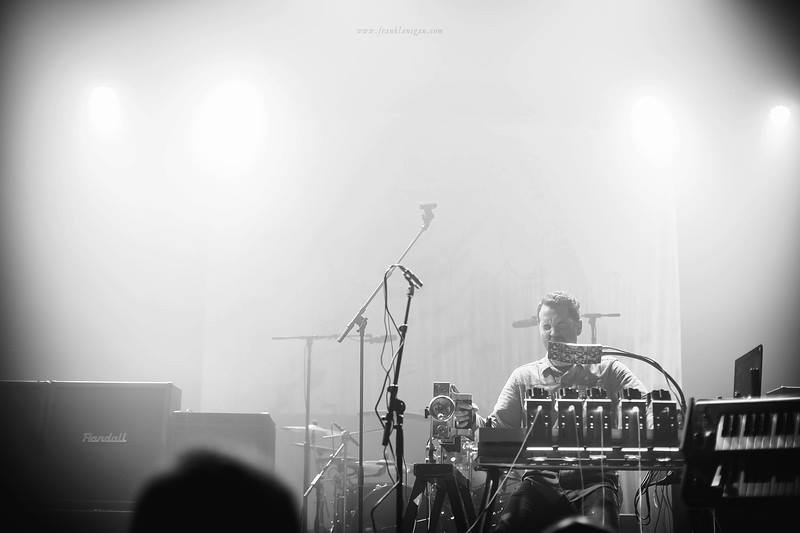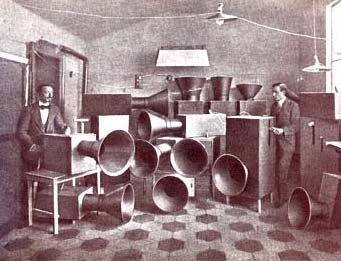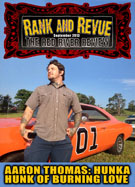Author & Punisher
Live At The Monstrosity Gallery, Austin Texas
August 23rd, 2013
“As it grows ever more complicated today, musical art seeks out combinations more dissonant, stranger, and harsher for the ear. Thus, it comes ever closer to the noise-sound.”
― Luigi Russolo, The Art of Noises 1913
How little often does the opportunity arrive to experience the complete time-line of a recorded genre of music in under one roof in one night?
For example, seeing Charlie Patton perform his parlor tricks on the same bill as Howlin’ Wolf and Jimmy Vaughan? Louis Armstrong sharing a bill with Coltrane and Weather Report, Or watching Mozart, Stravinsky and Philip Glass taking turns conducting orchestras through their own compositions?
This was the rare feeling I experienced tonight at the Monstrosity Gallery, a 3 story (if you include the roof patio) residential backyard artists’ retreat that’s a mix between post-modern southwestern architecture and a club house put together by 2x4s and plywood. Regardless of its DIY aesthetic, in the 2nd floor loft where the music can be found you will find all the essentials; kitchen, bathroom and finished walls and wooden floor that, within the limits of its small to medium sized capacity, provided a welcoming warm resonance that responded well to all the artists that played compared to the stark and stale atmosphere of experiencing this music in a dive bar such as Club 1808 or some other concrete and brick venues that I’ve seen similar acts perform at (and in some cases , these venues work best for the stark minimalism of cold-wave and sometimes harsh environments of noise and deconstructionist music of local acts such as Breakdancing Ronald Regan and Goat)
It was upon my entrance into the loft that I immediately noticed a life-size recreation from one of Luigi Russolo’s Intonarumori. The Intonarumori (Italian for “to intonate noise”) were a family of musical instruments invented in 1913 by Russolo, an Italian futurist painter and musical composer. They were acoustic noise generators that permitted one to create and control in dynamic and pitch several different types of noises.
Each instrument was made of a wooden parallelepiped sound box with a carton or metal speaker on its front side. The performer turned a crank or pressed an electric button to produce the sound whose pitch was controlled by means of a lever on top of the box. The lever could be moved over a scale in tones, semitones and the intermediate gradations within a range of more than an octave.
Inside the box there were a wooden or metal wheel (whose shape or diameter varied depending on the model) that make a catgut or metal string vibrate. The tension of the string is modified by means of the lever allowing glissandos or specific notes. At one end of the string there is a drum-head that transmits vibrations to the speaker.
There were 27 varieties of the Intonarumori with different names according to the sound produced: howling, thunder, crackling, crumpling, exploding, gurgling, buzzing, hissing and so on.
The invention of the Intonarumori was the natural outcome of Russolo’s musical theories expounded in his 1913 manifesto L’arte dei rumori (The Art of Noise) in which he presented his ideas about the use of noises in music.
The specific soundbox at my disposal, and for everyone and all to interact with and experience, produced sounds akin to street traffic, and at lower tones, something of an industrial-mechanical failure, like faulty gears grinding to a halt.
Some members of the audience were reaching their arms in and plucking the wire as if it were a diddly-bo, mimicking the sounds of a jazz bassist.
“Now you’re thinking outside of the box” I commented.
The point of mentioning this machine, is that it is the guitar in the hands of Charlie Patton of the noise-genre in all its recorded history.
It all starts here.
And it all currently leads to Author and Punisher; the best living example of Russolo’s predictions, blending the infinite organic human spirit that propels the music with the finite inorganic structures of industrial materialism and producing an outcome that can only be had by such a relationship.
Maybe someday we will have a similar realization between Religion and Science.
The setup for the show is truly that of the mad scientist who has spent lengthy amounts of time in isolation conceptualizing and producing this modern day Frankenstein of the Intonarumori, and just watching Tristan Shone set his rig up is almost a show unto itself.
Shone has come a long way from his days as a 6-string slinger and vokillist in his college-era band Falkirk where I was first introduced (indirectly) to mastermind Shone when I saw Falkirk open for the Dillinger Escape Plan at Valentines in Albany, NY back in January of 2000. He was handing out 2-song cassette tapes outside of the club after the show and I still have that cassette to this day. It is some of the best industrial-influenced hardcore metal I have ever heard, sounding like a clash between Slayer and Neurosis. Eventually sometime last year I found the MP3s on some Russian website, but up until then, I got a lot of mileage out of that tape.
His “microphone” appears to be an altered desk lamp (one of those lamps with the large magnifying glass attached to it used by architects and civil engineers) that is fitted with four or five sections of small contact-mic sized microphones, each individually assigned to a different digital coordinate capable of altering his vocals into demonic screams of agony and distraught catharsis, to lush reverb soaked hymns from the ghosts of some forgotten medieval cathedral.
Running parallel to Shrones torso, at the foot of this mechanical monster is what looks like a wood lathe that performs in a linear fashion similar to a piano, but instead of keys that register from low to high there is a saddle that slides across the bed and between the spindles creating a theramin-like effect.
A long with a laptop, a keyboard and a plethora of intermingling wires, the eye-catcher of this set up is an industrial lathe that is propelled with Shrone’s right arm.
It is one of the coolest goddamned looking things I have ever seen put to use in a musical performance.
He works the saddle of the lathe between two nodes that coordinate digital representations of a bass kick and a snare drum, essentially holding down the structures of his sound scapes with this powerful, at times frightening tool.
When the show is on and Shrone is conducting his machine, the atmosphere is often surreal, resulting in a feeling as if I was in a Terminator movie watching a cyborg perform. Definitely not a feeling you often get at a rock and roll, or even an average noise performance.
The set started off with a hypnotic trudge. Soundscapes that bring to mind the aurora borealis, and wavering low frequency tones that properly filled up the entire room and brought warmth directly to your bones, essentially laying out the canvas for the subtle rhythms to be painted. Rhythms, that because they were manipulated manually, and thus organically by use of the “lathes”, were hypnotic but not pretentious. What seemed like 4/4 time signatures were actually very intricately woven sub-divisions of 2 and 3.
There are several indiscreet cameras set up as well, that are controlled by a visual artist who is either the Author or the Punisher of this touring machine, a joke I asked myself at several times throughout the performance. I did not get his name, but he did a good job of weaving real-time stills of the audience with Shrone and his machines in action as well as stills from Hungarian director Bela Tarr and images of psychedelic symbology.
There were about six songs (or movements) total that he performed that night. The final two being the most memorable in my mind.
Shrone ended the set with “Terrorbird” followed by “Lonely”.
“Terrorbird” is musically similar to Jesu’s “Friends Are Evil”. A battering and lumbering repetition of wide-spectrum tone-terror that sounds as warm as one would imagine the coat of a Wooly Mammoth, and just as freighting as its sheer size, its undeniable power and, not just what you see standing before you as you hear it, but that fear, suspense and uncertainty of what it’s capable of.
These are sounds that are not only capable of tearing down walls and souls, but capable of building them up as well, through either inspiration, or imagination.
“Lonely” conjured up images of an early Throbbing Gristle song called “What A Day” where Genesis overlays vocals over a rhythm of tones that are indistinct in origin. Its both welcoming as well as it is violent, in so as much as this final performance of the night from Author and Punisher’s set was.
The crowd was enthusiastic and warm-welcoming and I must lend a shout-out to local noise artist and booking agent Johnathon Cash for putting it all together.
I left that show feeling a natural high I had not felt in a long while from music. Music that set out to, not necessarily erase all of the discordance in my mind and soul at the moment, but sort of “Defrag” it. I was brought back to balance within the limits of the weight, both good and bad, that I choose to carry up until that night.



